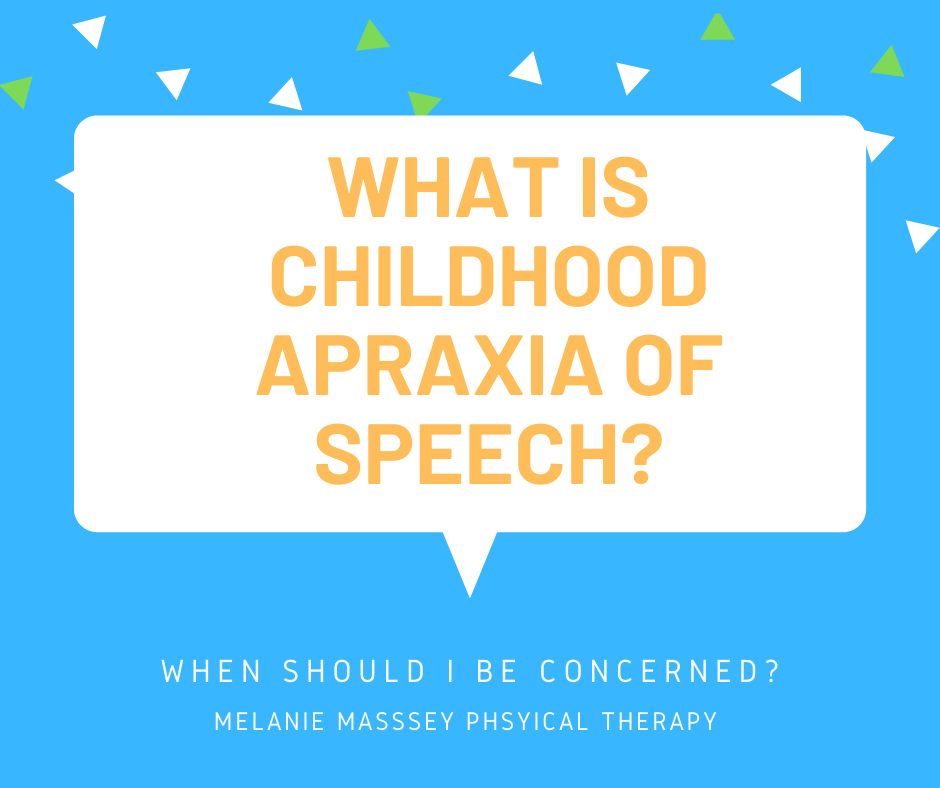What is Childhood Apraxia of Speech?

What is Childhood Apraxia of Speech?
Childhood Apraxia of Speech (CAS) is a neurological speech sound disorder seen in ages 3-21 in which the consistency of movements in normal speech are impaired due to neuromuscular deficits, such as abnormal muscle tone and abnormal reflexes.
When should parents start feeling concerned?
CAS can be identified as early as age 2 years -3 years. Around the age of 2 and 3, your child should start saying around 50-100 intelligible words that their listener can understand, such as, cup, mommy, daddy. If you are having trouble understanding your child, notice they are not articulating the correct sounds in words, or notice they are not saying words to express their wants/needs daily, here are some common characteristics children with CAS may portray:
- Inconsistent errors of consonants and vowels in repeated productions of syllables or words (ex. mommy, daddy)
- Inappropriate prosody (too loud or too soft)
- Disrupted transitions between sounds and syllables
- Difficulty with smooth movements from one sound to the next
- Vowel errors such as vowel distortions or substitutions
- Pausing in between sounds, syllables, or words that may cause speech to sound “spaced out”
- Slower rate of speech
- Difficulty increasing with longer, more complex syllables or words
- Sound substitutions for other sounds (ex. cat…cak)
How do Speech Therapist Treat Childhood Apraxia of Speech?
The main goal for Speech Therapist is to help your child express their wants/needs and become more intelligible to their listener. Here are some treatment strategies Speech Therapist use to help your child with CAS:
- Shape the most accurate production of sounds in isolation, syllables, words, phrases, and eventually sentences.
- Sensory cues, such as verbal/visual/tactile cues, to teach the specific movement sequences for speech sounds
- Motor programming involves frequent and intensive practice of speech targets and accurate speech movement.
- Melodic intonation therapy is commonly used for children who have inappropriate prosody (stress, rhythm, loudness)
- Kaufman Speech Praxis Treatment Kit for Children is a common tool used to treat CAS. It involves multiple syllabic cards that start off with the basic foundation of sounds/words. First, Consonant-Vowel and Vowel-Consonant words are targeted. Once those sounds are intelligible and consistent, Consonant-Vowel-Consonant and Vowel-Consonant-Vowel words are targeted. The hierarchy continues as the child is able to articulate each sound in the word being produced.
- Augmentative and Alternative Communication (AAC) involves replacing or supplementing natural speech with aided and unaided symbols (sign language, speech-generating devices, picture communication, and tangible objects). Even though our main goal is for the child to verbally speak, AAC can help increase your child’s ability to express their wants/needs when they are not able to verbally state the words.
Monroe
West Monroe
Ruston
Shreveport
Monday-Friday
8am-5:30pm
Copyright © 2026 Melanie Massey Physical Therapy
